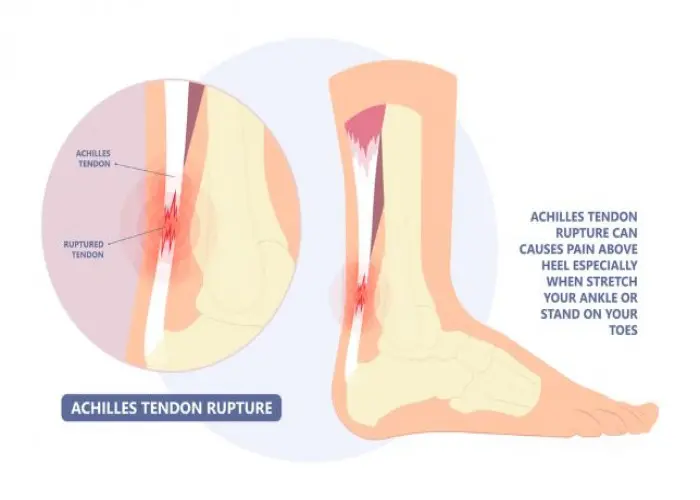 Welcome
Welcome
“May all be happy, may all be healed, may all be at peace and may no one ever suffer."
Meningioma

A meningioma is a type of brain tumor that develops in the meninges, the protective membranes that surround the brain and spinal cord. Meningiomas are usually slow-growing tumors that are typically benign, but in rare cases they can be cancerous (malignant).
The exact cause of meningiomas is unknown, but certain risk factors have been identified, such as exposure to radiation, genetic mutations, and hormonal factors (such as an increased risk in women who have received hormone replacement therapy).
Symptoms of meningiomas depend on the size and location of the tumor, but may include:
- Headaches that may be severe and occur in the morning or at night
- Seizures
- Changes in vision, such as blurred vision or double vision
- Weakness or numbness in the arms or legs
- Difficulty speaking or understanding speech
- Loss of memory or other cognitive functions
To diagnose a meningioma, a healthcare provider may perform a physical exam and order imaging tests such as a CT scan or MRI to evaluate the brain and look for any abnormalities. A biopsy may also be performed to determine if the tumor is benign or malignant.
Treatment for meningiomas depends on the size, location, and grade of the tumor. Small tumors that are not causing symptoms may be monitored with regular imaging tests. Larger or symptomatic tumors may require surgery to remove the tumor or relieve pressure on the brain. Radiation therapy may also be used to shrink the tumor or prevent regrowth.
Overall, the prognosis for meningiomas is generally good, especially for benign tumors that are completely removed. However, there is a risk of recurrence or the development of new tumors, so regular follow-up care is important.
Research Papers
Disease Signs and Symptoms
- Blurred vision of eye
- Language difficulty
- Weakness and numbness in legs
- Weakness and numbness in arms
- Seizures
- Smell loss
- Memory loss
- Decreased hearing
- Headaches
- Double vision (diplopia)
- Headaches, especially those that are worse in the morning
Disease Causes
Meningioma
It isn't clear what causes a meningioma. Doctors know that something alters some cells in your meninges to make them multiply out of control, leading to a meningioma tumor.
Whether this occurs because of genes you inherit, hormones (which may be related to the more frequent occurrence in women), the rare instance of prior exposure to radiation or other factors remains largely unknown. There is no solid evidence to support the belief that meningiomas occur because of cellphone use.
Disease Prevents
Disease Treatments
The treatment you receive for a meningioma depends on many factors, including:
- The size and location of the meningioma
- The rate of growth or aggressiveness of the tumor
- Your age and overall health
- Your goals for treatment
Wait-and-see approach
Immediate treatment isn't necessary for everyone with a meningioma. A small, slow-growing meningioma that isn't causing signs or symptoms may not require treatment.
If the plan is not to undergo treatment for meningioma, you'll likely have brain scans periodically to evaluate your meningioma and look for signs that it's growing.
If your provider determines the meningioma is growing and needs to be treated, you have several treatment options.
Surgery
If the meningioma causes signs and symptoms or shows signs that it's growing, your provider may recommend surgery.
Surgeons work to remove the meningioma completely. But because a meningioma may occur near many delicate structures in the brain or spinal cord, it isn't always possible to remove the entire tumor. In those cases, surgeons remove as much of the meningioma as possible.
The type of treatment, if any, you need after surgery depends on several factors.
- If no visible tumor remains, then no further treatment may be necessary. However, you will have periodic follow-up scans.
- If the tumor is benign and only a small piece remains, then your provider may recommend periodic follow-up scans only. In some cases, small leftover tumors may be treated with a form of radiation treatment called stereotactic radiosurgery.
- If the tumor is atypical or malignant, you'll likely need radiation.
Surgery may pose risks including infection and bleeding. The specific risks of your surgery will depend on where your meningioma is located. For instance, surgery to remove a meningioma that occurs around the optic nerve can lead to vision loss. Ask your surgeon about the specific risks of your surgery.
Radiation therapy
If the meningioma can't be completely removed surgically, your provider may recommend radiation therapy following or instead of surgery.
The goal of radiation therapy is to destroy any remaining meningioma cells and reduce the chance that the meningioma may recur. Radiation therapy uses a large machine to aim high-powered energy beams at the tumor cells.
Advances in radiation therapy increase the dose of radiation to the meningioma while reducing radiation to healthy tissue. Radiation therapy options for meningiomas include:
- Stereotactic radiosurgery (SRS), a type of radiation treatment that aims several beams of powerful radiation at a precise point. Contrary to its name, radiosurgery doesn't involve scalpels or incisions. Radiosurgery typically is done in an outpatient setting in a few hours. Radiosurgery may be an option for people with meningiomas that can't be removed with conventional surgery or for meningiomas that recur despite treatment.
- Fractionated stereotactic radiotherapy (SRT), which delivers radiation in small fractions over time, such as one treatment a day for 30 days. This approach may be used for tumors too large for radiosurgery or those in an area that can't tolerate the high intensity of radiosurgery — such as near the optic nerve.
- Intensity-modulated radiation therapy (IMRT), which uses computer software to modify the intensity of radiation directed at the meningioma site. This may be used for meningiomas located near sensitive brain structures or those with a complex shape.
- Proton beam radiation, which uses radioactive protons precisely targeted at the tumor, reducing damage to the surrounding tissue.
Drugs
Drug therapy (chemotherapy) is rarely used to treat meningiomas, but it may be used in cases that don't respond to surgery and radiation.
There isn't a widely accepted chemotherapy approach to the treatment of meningiomas, but researchers are currently studying other targeted approaches.
Disease Diagnoses
Disease Allopathic Generics
Disease Ayurvedic Generics
Disease Homeopathic Generics
Disease yoga
Meningioma and Learn More about Diseases

Chronic exertional compartment syndrome

Esophageal spasms

Shingles

Round Worm

Toxic hepatitis

Cough headaches

Achilles tendon rupture

Pinched nerve
meningioma, মেনিনিংওমা
To be happy, beautiful, healthy, wealthy, hale and long-lived stay with DM3S.
